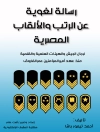In the West, human bondage remains synonymous with the Atlantic slave trade. But large slave systems in Africa and Asia predated, co-existed, and overlapped with the Atlantic system—and have persisted in modified forms well into the twenty-first century, posing major threats to political and economic stability within those regions and worldwide. This handbook examines the deep historical roots of unfree labour in Africa and Asia along with its contemporary manifestations. It takes an innovative
longue durée perspective in order to link the local and global, the past and present. Contributors trace shifting forms of forced labour in the region since circa 1800, connecting punctual shocks such as environmental crisis, conflict, market instability, and crop failure to human security threats such as impoverishment, violence, migration, kidnapping, and enslavement. Together, these chapters illuminate the historical and contemporary dimensions of bondage in Africa and Asia, withimportant implications for the fight against modern-day bondage and human trafficking.
Tabella dei contenuti
1. Introduction.- 2. The Domestic Outsider: Interpreting Contradictions in the Status of Maidservants in Qing China.- 3. The Abolition of Slavery and the Status of Slaves in Late Imperial China.- 4. Labour Migration to the French Islands of the Western Indian Ocean, 1830–60.- 5. Relationships between Economic and Environmental Factors, and Labour Migration to Réunion, 1820-60.- 6. Trafficking, Slavery, Peonage: Dilemmas and Hesitations of Colonial Administrators in Indonesia, the Philippines, and Malaysia.- 7. Disciplining the Hill Tribes into
Coolie Labour for Road Construction.- 8. Mediated (Im)mobility: Indian Labour Migration to Ceylon under the Kangany System (c. 1850-1940).- 9. Anti-indenture as Antislavery: Early Indian Nationalism and the Trope of Slavery.- 10. Changing Masters in the
Longue Durée: Slavery and Abolition in Egypt and the Sudan, 1798-1882.- 11. Abolitionism and the African Slave Trade in the Ottoman Empire (1857–1922).- 12. The Abolition of Slavery and the ‘New Labour Contract’ in French Equatorial Africa, 1890–1914.- 13. The Persistence of Slavery in the Southern Red Sea Region in the Nineteenth and Twentieth Centuries.- 14. Sex, Money, and Modern-Day Slavery: Trafficking of Women and Children in China.- 15. Rural Women as Property in Zambia: The AIDS Exit.- 16. Child Labour and its Interaction with Adult Labour in Ivory Coast (1980-2002).- 17. Trauma and Inter-Communal Relations among a Captive Population: Preliminary Findings from the Malakal Po C, South Sudan.- 18. The Persistence of Debt Bondage in South India: Market and Political Alliances.- 19. Debt Bondage and Vulnerable Work in South Indian Silk Processing.- 20. Indebted to Work: Bondage in Brick Kilns.
Circa l’autore
Gwyn Campbell is Founding Director of the Indian Ocean World Centre, Mc Gill University, Canada. He is also Editor of the Palgrave Series in Indian Ocean World Studies and Editor-in-Chief of the
Journal of Indian Ocean World Studies. His publications include
Africa and the Indian Ocean World from Early Times to circa 1900 (2019) and
An Economic History of Imperial Madagascar, 1750–1895 (2005).
Alessandro Stanziani is Director of Studies at the École des Hautes Études en Sciences Sociales (EHESS) and Research Director at the Centre national de la recherche scientifique (CNRS), Paris. His monographs include
Labor on the Fringes of Empire: Voice, Exit and the Law (Palgrave, 2018) and
Eurocentrism and the Politics of Global History (Palgrave, 2018).












